The VNImageRectForNormalizedRect is returning CGRect with the y coordinates flipped. (I suspect it was written for macOS, which uses a different coordinate system than iOS.)
Instead, I might suggest a version of boundingBox adapted from Detecting Objects in Still Images:
/// Convert Vision coordinates to pixel coordinates within image.
///
/// Adapted from `boundingBox` method from
/// [Detecting Objects in Still Images](https://developer.apple.com/documentation/vision/detecting_objects_in_still_images).
/// This flips the y-axis.
///
/// - Parameters:
/// - boundingBox: The bounding box returned by Vision framework.
/// - bounds: The bounds within the image (in pixels, not points).
///
/// - Returns: The bounding box in pixel coordinates, flipped vertically so 0,0 is in the upper left corner
func convert(boundingBox: CGRect, to bounds: CGRect) -> CGRect {
let imageWidth = bounds.width
let imageHeight = bounds.height
// Begin with input rect.
var rect = boundingBox
// Reposition origin.
rect.origin.x *= imageWidth
rect.origin.x += bounds.minX
rect.origin.y = (1 - rect.maxY) * imageHeight + bounds.minY
// Rescale normalized coordinates.
rect.size.width *= imageWidth
rect.size.height *= imageHeight
return rect
}
Note, I changed the method name because it does not return a bounding box, but rather converts a bounding box (with values in [0,1]) to a CGRect. I also fixed a little bug in their boundingBox implementation. But it captures the main idea, namely flipping the y-axis of the bounding box.
Anyway, that yields the right boxes:

E.g.
func recognizeText(in image: UIImage) {
guard let cgImage = image.cgImage else { return }
let imageRequestHandler = VNImageRequestHandler(cgImage: cgImage, orientation: .up)
let size = CGSize(width: cgImage.width, height: cgImage.height) // note, in pixels from `cgImage`; this assumes you have already rotate, too
let bounds = CGRect(origin: .zero, size: size)
// Create a new request to recognize text.
let request = VNRecognizeTextRequest { [self] request, error in
guard
let results = request.results as? [VNRecognizedTextObservation],
error == nil
else { return }
let rects = results.map {
convert(boundingBox: $0.boundingBox, to: CGRect(origin: .zero, size: size))
}
let string = results.compactMap {
$0.topCandidates(1).first?.string
}.joined(separator: "\n")
let format = UIGraphicsImageRendererFormat()
format.scale = 1
let final = UIGraphicsImageRenderer(bounds: bounds, format: format).image { _ in
image.draw(in: bounds)
UIColor.red.setStroke()
for rect in rects {
let path = UIBezierPath(rect: rect)
path.lineWidth = 5
path.stroke()
}
}
DispatchQueue.main.async { [self] in
imageView.image = final
label.text = string
}
}
DispatchQueue.global(qos: .userInitiated).async {
do {
try imageRequestHandler.perform([request])
} catch {
print("Failed to perform image request: \(error)")
return
}
}
}
/// Convert Vision coordinates to pixel coordinates within image.
///
/// Adapted from `boundingBox` method from
/// [Detecting Objects in Still Images](https://developer.apple.com/documentation/vision/detecting_objects_in_still_images).
/// This flips the y-axis.
///
/// - Parameters:
/// - boundingBox: The bounding box returned by Vision framework.
/// - bounds: The bounds within the image (in pixels, not points).
///
/// - Returns: The bounding box in pixel coordinates, flipped vertically so 0,0 is in the upper left corner
func convert(boundingBox: CGRect, to bounds: CGRect) -> CGRect {
let imageWidth = bounds.width
let imageHeight = bounds.height
// Begin with input rect.
var rect = boundingBox
// Reposition origin.
rect.origin.x *= imageWidth
rect.origin.x += bounds.minX
rect.origin.y = (1 - rect.maxY) * imageHeight + bounds.minY
// Rescale normalized coordinates.
rect.size.width *= imageWidth
rect.size.height *= imageHeight
return rect
}
/// Scale and orient picture for Vision framework
///
/// From [Detecting Objects in Still Images](https://developer.apple.com/documentation/vision/detecting_objects_in_still_images).
///
/// - Parameter image: Any `UIImage` with any orientation
/// - Returns: An image that has been rotated such that it can be safely passed to Vision framework for detection.
func scaleAndOrient(image: UIImage) -> UIImage {
// Set a default value for limiting image size.
let maxResolution: CGFloat = 640
guard let cgImage = image.cgImage else {
print("UIImage has no CGImage backing it!")
return image
}
// Compute parameters for transform.
let width = CGFloat(cgImage.width)
let height = CGFloat(cgImage.height)
var transform = CGAffineTransform.identity
var bounds = CGRect(x: 0, y: 0, width: width, height: height)
if width > maxResolution ||
height > maxResolution {
let ratio = width / height
if width > height {
bounds.size.width = maxResolution
bounds.size.height = round(maxResolution / ratio)
} else {
bounds.size.width = round(maxResolution * ratio)
bounds.size.height = maxResolution
}
}
let scaleRatio = bounds.size.width / width
let orientation = image.imageOrientation
switch orientation {
case .up:
transform = .identity
case .down:
transform = CGAffineTransform(translationX: width, y: height).rotated(by: .pi)
case .left:
let boundsHeight = bounds.size.height
bounds.size.height = bounds.size.width
bounds.size.width = boundsHeight
transform = CGAffineTransform(translationX: 0, y: width).rotated(by: 3.0 * .pi / 2.0)
case .right:
let boundsHeight = bounds.size.height
bounds.size.height = bounds.size.width
bounds.size.width = boundsHeight
transform = CGAffineTransform(translationX: height, y: 0).rotated(by: .pi / 2.0)
case .upMirrored:
transform = CGAffineTransform(translationX: width, y: 0).scaledBy(x: -1, y: 1)
case .downMirrored:
transform = CGAffineTransform(translationX: 0, y: height).scaledBy(x: 1, y: -1)
case .leftMirrored:
let boundsHeight = bounds.size.height
bounds.size.height = bounds.size.width
bounds.size.width = boundsHeight
transform = CGAffineTransform(translationX: height, y: width).scaledBy(x: -1, y: 1).rotated(by: 3.0 * .pi / 2.0)
case .rightMirrored:
let boundsHeight = bounds.size.height
bounds.size.height = bounds.size.width
bounds.size.width = boundsHeight
transform = CGAffineTransform(scaleX: -1, y: 1).rotated(by: .pi / 2.0)
default:
transform = .identity
}
return UIGraphicsImageRenderer(size: bounds.size).image { rendererContext in
let context = rendererContext.cgContext
if orientation == .right || orientation == .left {
context.scaleBy(x: -scaleRatio, y: scaleRatio)
context.translateBy(x: -height, y: 0)
} else {
context.scaleBy(x: scaleRatio, y: -scaleRatio)
context.translateBy(x: 0, y: -height)
}
context.concatenate(transform)
context.draw(cgImage, in: CGRect(x: 0, y: 0, width: width, height: height))
}
}



